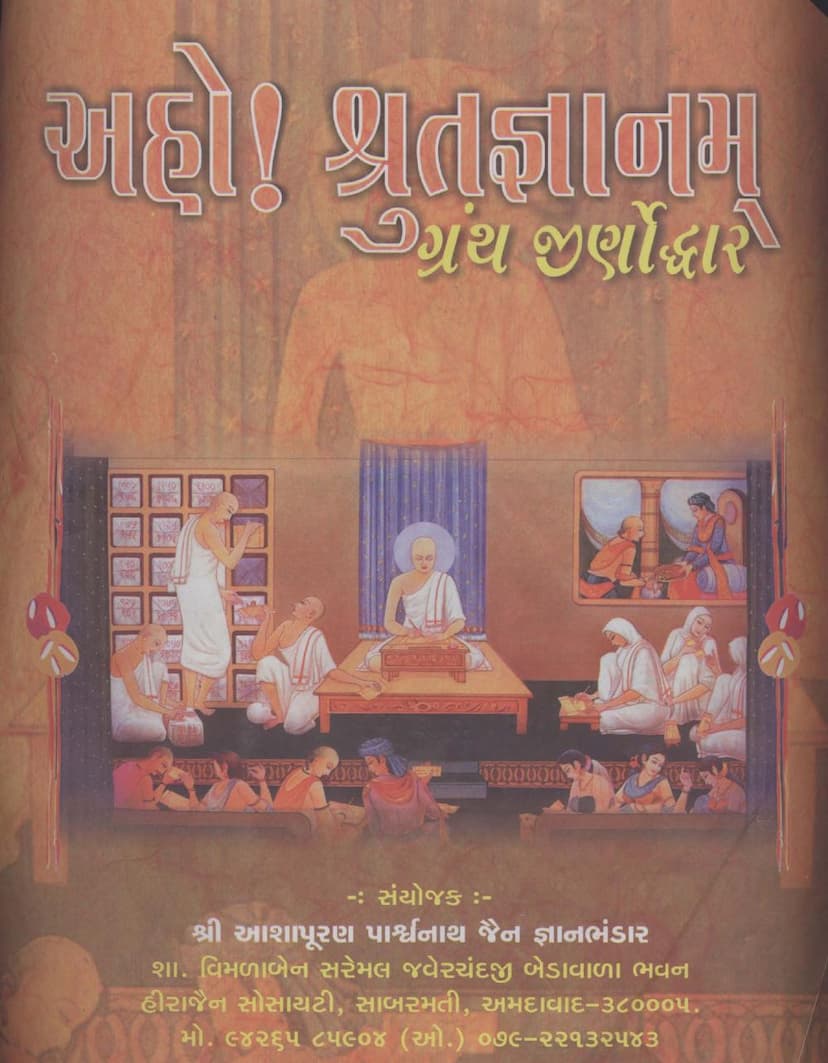Operation In Search Of Sanskrit Manuscripts In Mumbai Circle 5
Added to library: September 2, 2025

Summary
This Jain text, titled "Operation In Search of Sanskrit Manuscripts in Mumbai Circle 5" by P. Peterson, published by the Royal Asiatic Society, is a comprehensive catalog of Sanskrit manuscripts. The provided pages indicate a detailed listing of various Jain texts, likely with scholarly annotations and historical context.
Here's a breakdown of the information presented:
Overall Purpose and Context:
- The document appears to be a report or catalog related to the preservation and study of Jain manuscripts, specifically focusing on those found in the Mumbai Circle.
- The phrase "Operation In Search of Sanskrit Manuscripts" suggests an initiative to locate, document, and potentially preserve these important texts.
- The "Jain Education International" mention indicates a commitment to educational dissemination and accessibility of Jain knowledge.
- The dates "2011" and "2067" (Saka year) point to a publication or project timeline.
Key Content Areas:
-
Jirnoddhar (Restoration/Reconstruction): The repeated mention of "જીર્ણોદ્ધાર" (Jirnoddhar) signifies a project focused on restoring or preserving ancient and possibly damaged manuscripts. This is further supported by the title "અહો શ્રુતજ્ઞાનમ ગ્રંથ જીર્ણોદ્ધાર" (Aho Shrutgyanam Granth Jirnoddhar), which translates to "Aho Shrutgyanam: Restoration of the Book." This suggests a specific project to restore a particular collection or set of texts.
-
Catalog of Manuscripts: The bulk of the document is a list of books, identified by a serial number, book name, author/commentator, language, and sometimes page numbers. This list is extensive, covering a wide range of subjects, primarily within Jain literature and philosophy.
-
Subject Matter of Manuscripts: The listed books cover various domains:
- Jain Scriptures and Commentaries: Texts like "Shri Nandi Sutra Avachuri," "Shri Uttaradhyayan Sutra Churni," "Shri Siddha Hema Vrutti," etc., indicate a focus on core Jain scriptures and their interpretations.
- Philosophy and Logic: Works related to Jain philosophy, logic (e.g., "Nyaya Pravesh," "Syadvada Ratnakara"), and epistemology are present.
- Arts and Architecture: Numerous titles related to "Shilpa" (sculpture/architecture), "Vastu Vidya" (architectural science), "Prasad Tilak," "Prasad Manjari," "Shilp Ratna," and "Vastu Sara" suggest a significant interest in Jain architectural traditions and their textual documentation.
- Astronomy and Astrology: Titles like "Jyotir Mahoday" and "Janma Samudra Jataka" point to works on these subjects.
- Literature and Linguistics: Texts like "Kashyapa Shilpam," "Rajavallabha," and "Prakrit Vyakaran Bhashantar" indicate works on grammar, literature, and linguistic studies.
- History and Biographies: Titles like "Kala Kalikacharya Katha Sangrah," "Bharatna Jaintirtho," and "Jain Lekh Sangrah" suggest historical and biographical accounts.
- Rituals and Practices: Works related to rituals and practices might be included.
-
Authorship and Editorship: The catalog diligently lists the authors and commentators for each work, highlighting the scholarly effort involved. Prominent figures in Jain tradition and scholarship appear to be represented.
-
Restoration Efforts: The project's aim is to provide "scan DVDs" of "prayo apraptya prachin pustakon" (mostly unobtainable ancient books), making them downloadable from a website. This demonstrates a commitment to modern preservation and accessibility methods.
-
Structure of the Catalog: The catalog appears to be organized into sets (Set No. 1, Set No. 2, Set No. 3), suggesting a systematic approach to listing and potentially digitizing the manuscripts.
In essence, this document is a detailed report on a significant project to preserve, restore, and make accessible a vast collection of Jain Sanskrit manuscripts, with a particular emphasis on subjects like Jain scripture, philosophy, and the rich tradition of Jain architecture. The effort is driven by a desire to safeguard this valuable heritage for future generations and to facilitate scholarly study and research.